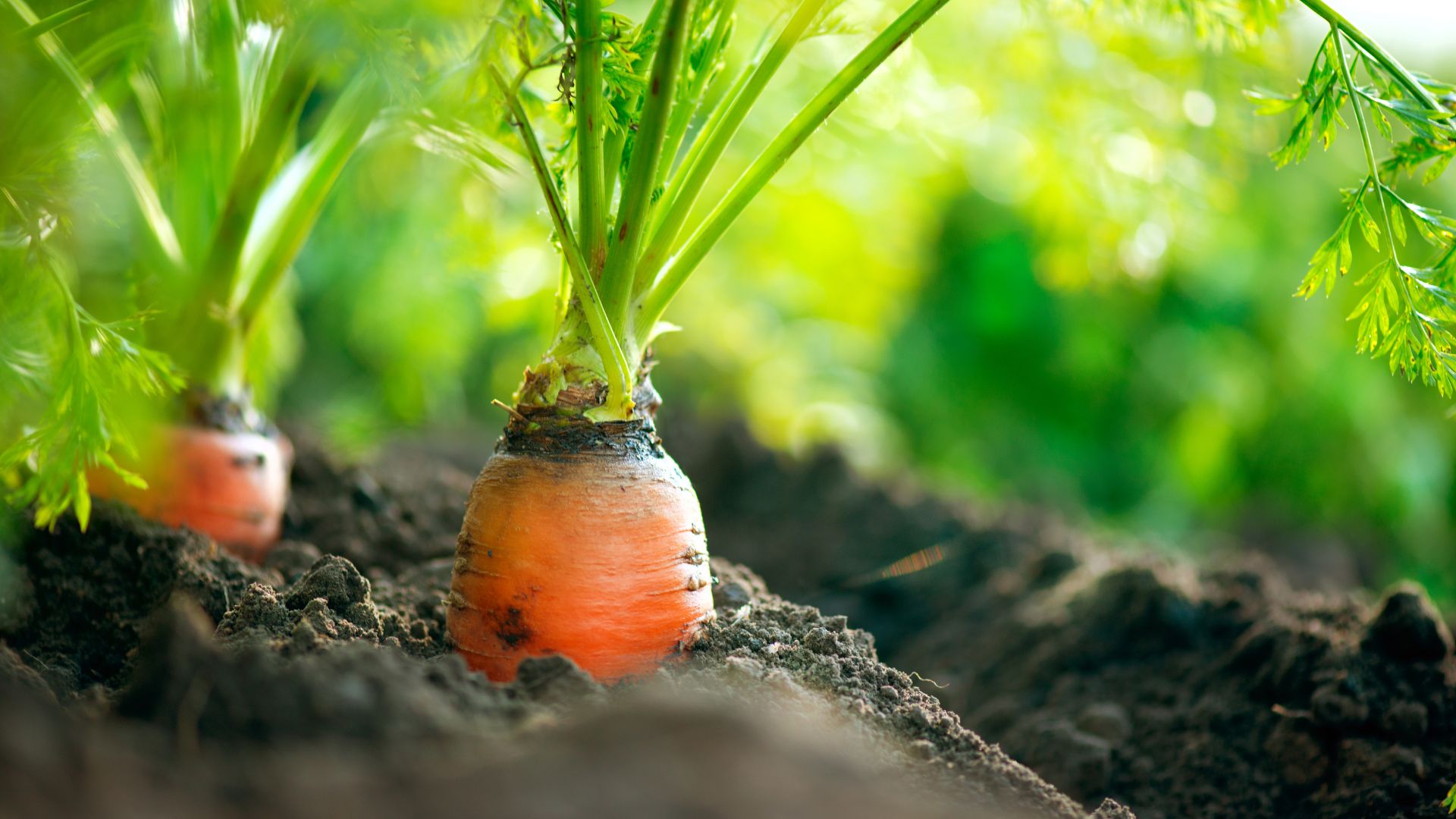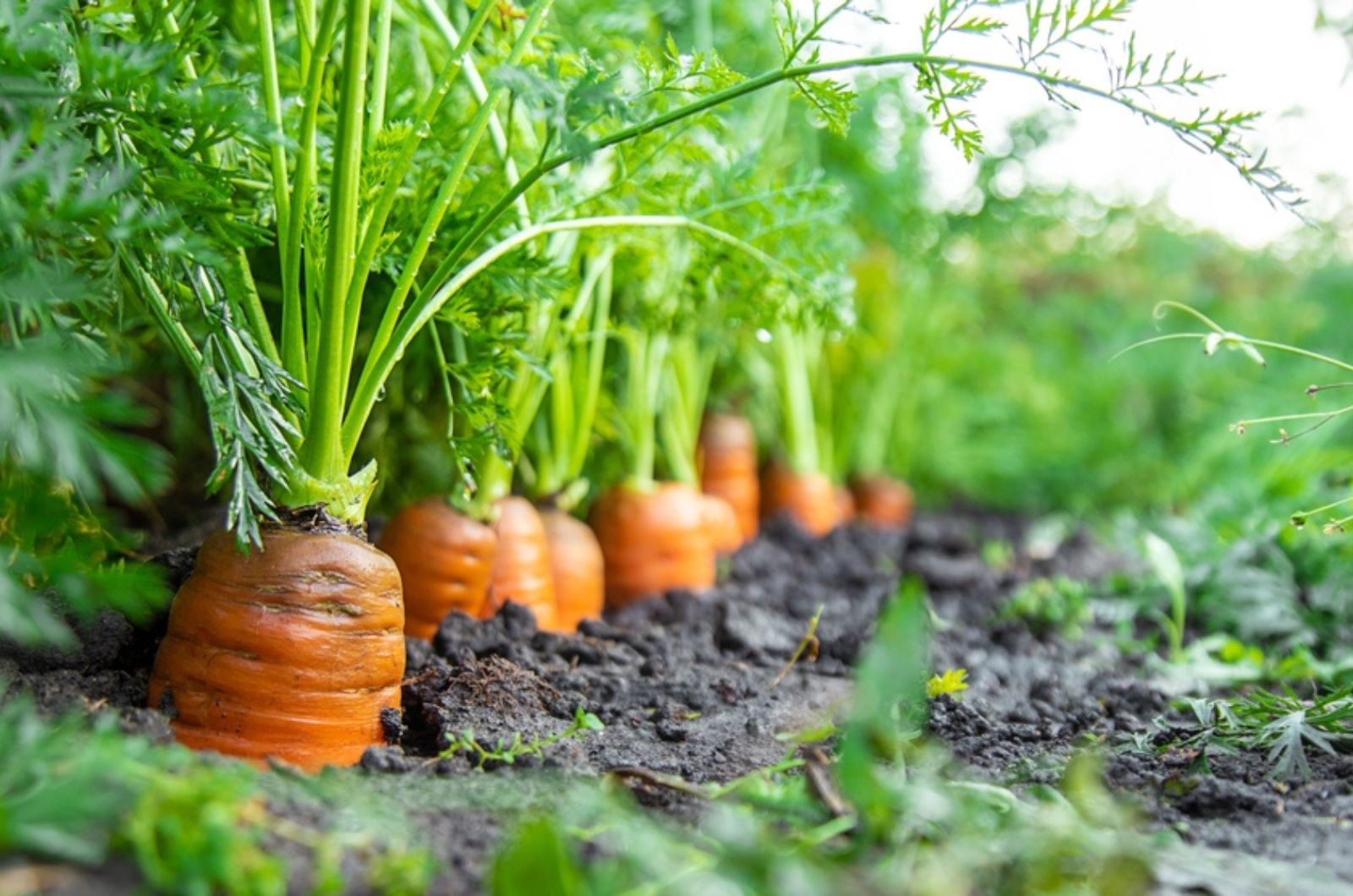When I first started growing carrots, I expected it to be a piece of cake. Everything went smoothly until the carrots began to crowd each other. At one point, my garden was so dense I couldn’t even see the ground!
That’s when I realized I needed to start thinning them out.
Thinning might seem tough because it means pulling out some plants you’ve worked hard to grow. But trust me, it’s crucial. Carrots need at least 1 inch of space to grow big and strong.
Even though it’s hard to say goodbye to some seedlings, remember – young carrots are tasty snacks!
However, to get it right, you need to know how to do it properly. Here are some tips that really helped me thin out my carrots effectively.
Wait For The Perfect Moment To Thin Your Carrots
The first thing you should consider is the timing.
Carrots are pretty versatile and can be grown in most climates, from freezing areas to tropical ones. However, they’re not fans of summer, so the cool, crisp days of spring and fall are their favorite times to grow.
If your soil is warmer than 80°F, don’t be surprised if your carrot seeds take their sweet time to sprout (sometimes up to three weeks). Just be patient and keep them well-watered!
When it comes to spacing, it varies depending on the type of carrot you’re growing, so always check your seed packet. On average, aim for 1 to 3 inches between each plant.
Resist the urge to thin too early – wait until the largest seedlings have greens about 4 inches tall and three to four true leaves. This way, you’ll know which carrots to keep and can even snack on the smaller ones that need to be thinned out.
I absolutely adore baby carrots and you can use them to prepare so many delicious meals!
Related: Get Ready To Grow The Tastiest Carrots In Your Containers With Zero Effort
If Your Carrots Aren’t Growing, These Might Be To Blame
Even with ample space, your carrots might still not reach their full potential.
One common culprit is compacted soil. Carrots need light, sandy, and fertile soil that’s free of rocks to thrive. If your garden soil is too heavy or poor quality, try growing carrots in containers where you can better control the soil conditions.
Watering is another crucial factor. Carrots that don’t get enough water often grow poorly and become fibrous and stringy. Aim to water deeply once or twice a week, making sure the soil a few inches below the surface is adequately moist.
Another sneaky saboteur could be inconsistent temperatures. Carrots prefer cooler weather and can struggle in extreme heat or cold. Make sure your carrots are planted during the right season for your region, and consider using shade cloth or mulch to regulate soil temperature.
While thinning your carrots is super important, it’s not a magic fix for everything. Your carrots still need proper care to truly thrive. Make sure they have plenty of space to grow, but don’t stop there.
Consistent watering, quality soil, and the right temperatures are just as crucial. With all these elements in place, your carrots will grow like never before!
Also read: Plant Them Together! Onions & Carrots Are The Perfect Couple


